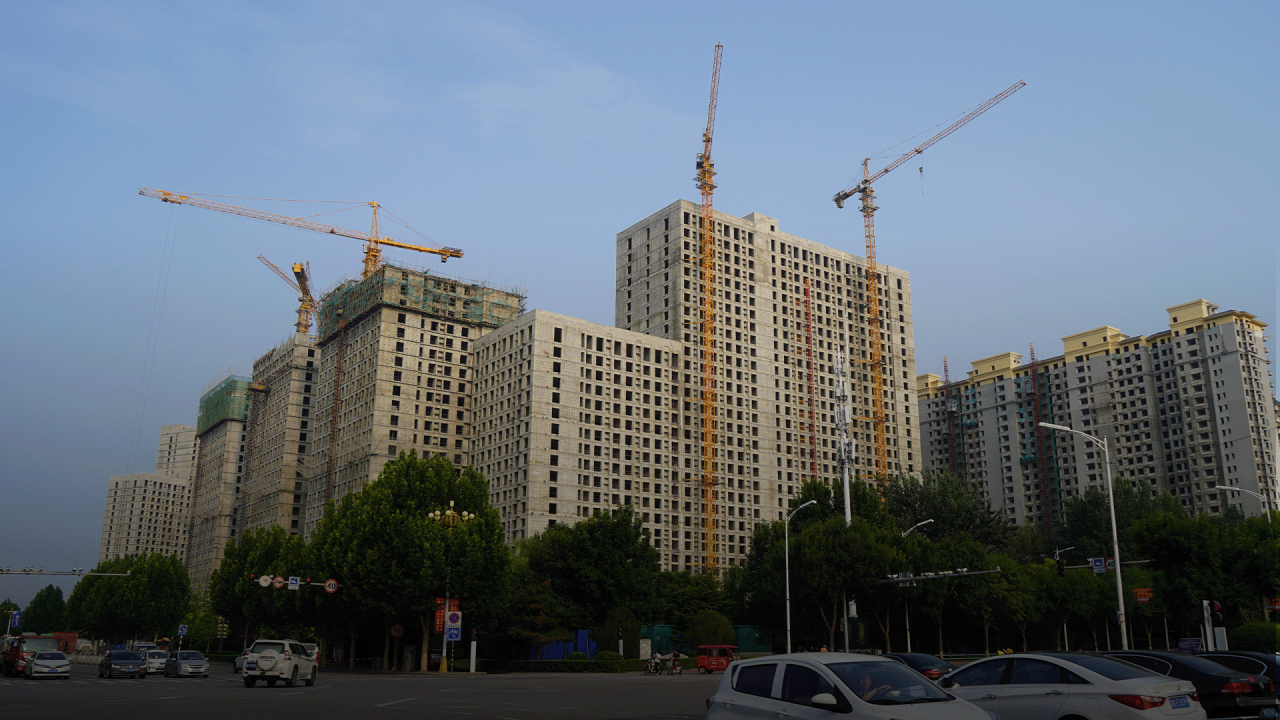
07:21
Growing anger over China’s unfinished ‘rotten tail’ buildings: ‘We really need this home’

Chinese banks are set to report about 5 per cent year-on-year profit growth for the first half of 2022, as sustained loan growth to support infrastructure and state companies is expected to offset weaker retail loan demand caused by Covid-19 lockdowns in the second quarter, analysts said.
The six leading state-owned banks, including Bank of China, China Construction Bank, Industrial and Commercial Bank of China and Agricultural Bank of China, will begin releasing their first-half results over the next two weeks. Bank of Communications and Postal Savings Bank of China will be the first to report next week.
While China’s gross domestic product growth sank to just 0.4 per cent in the second quarter, its lowest quarterly number since the first three months of 2020, state-owned banks will still be able to eke out growth, as they have heeded Beijing’s call to dial up lending to infrastructure projects to support the economy.
“State-owned banks have responded to the government by lending more to support infrastructure projects and state enterprises. Therefore, these banks should be able to report about 5 per cent growth, shrugging off the impact from sluggish loan demand from small businesses and consumers,” said Chen Shujin, an analyst at Jefferies.
In June, Beijing called on policy lenders to set up an 800 billion yuan (US$119.6 billion) line of credit for infrastructure projects as a way of bolstering an economy battered by coronavirus containment lockdowns. Such measures, for instance, hit businesses hard in the financial hub of Shanghai, which ground to a halt for two months.
State-owned commercial banks have also mirrored the move by policy lenders, by extending new loans to projects and specific corporate sectors such as high-end manufacturing, analysts said.
“Large state-owned banks have traditionally been more focused on loans to [state-owned] enterprises and companies,” said DBS analyst Lu Manyi, who also pointed to an about 5 per cent growth in profits. “Their loan books are therefore less sensitive to the disruption caused by lockdown measures on retail loans, compared to smaller banks.”
Banks’ new yuan loans in the first half of this year rose to a record 13.68 trillion yuan, data from China’s central bank shows. They are also likely to report that the quality of their assets has been largely unaffected by the woes of China’s property sector.
The banking sector’s non-performing loan (NPL) ratio stood at 1.67 per cent as of June end, compared to 1.69 per cent at the end of March, data from the China Banking and Insurance Regulatory Commission shows. The sector as a whole saw its net profit rise by 7.1 per cent in the first half from the same period a year ago.
Since around April, homebuyers of pre-sold properties in more than 300 projects have been boycotting their mortgage payments to banks because of delays in construction work on their homes. Many of these projects are associated with troubled developers such as China Evergrande Group, which have defaulted on their bonds.
Jefferies analyst Chen said that the outstanding mortgage balance from all the suspended projects would amount to 400 billion yuan – or just 0.2 per cent of the banking sector’s loan book. She, therefore, expected the boycott to not pose a significant risk to banks.
The bigger risk, however, would be banks’ lending to property developers, said Hans Fan, head of China financials research at CLSA, and this might show up in the second-half of this year. He, however, expected Chinese banks will report about 6 per cent growth for the full year and did not provide a midyear forecast.
A string of developers have been mired in crises and many such as China Evergrande and Fantasia Holdings have defaulted on their bonds, after Beijing introduced leverage caps on highly-indebted players in August 2020 to stem systemic risk, shutting many of them out of the funding market.
The NPL ratios of property development loans among Hong Kong-listed Chinese banks already rose to 3.1 per cent in 2021, from 1.8 per cent a year ago. Fan said that these would climb to “high single digits” by the end of this year.
“The risk is that some Chinese banks are still in the process of recognising more bad debt from property developers in their financial statements,” he said, adding that such a level was still manageable for the banks.